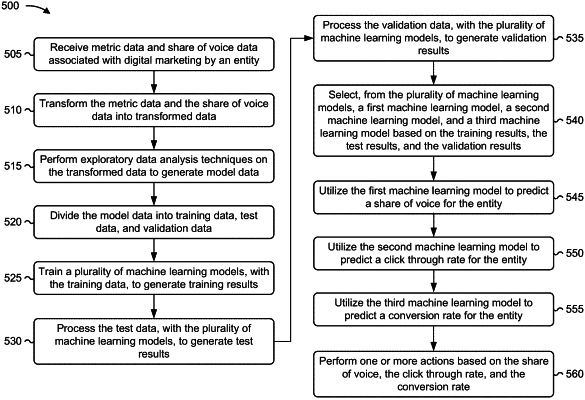| CPC G06Q 30/0276 (2013.01) | 20 Claims |

|
1. A method, comprising:
receiving, by a device, metric data and share of voice data associated with digital marketing by an entity;
transforming, by the device, the metric data and the share of voice data into transformed data;
performing, by the device, exploratory data analysis techniques on the transformed data to generate model data;
dividing, by the device, the model data into training data, test data, and validation data;
training, by the device, a plurality of machine learning models, with the training data, to generate training results;
processing, by the device, the test data, with the plurality of machine learning models, to generate test results;
processing, by the device, the validation data, with the plurality of machine learning models, to calculate root mean square errors;
processing, by the device, the validation data, with the plurality of machine learning models, to calculate R-squared values;
processing, by the device, the validation data, with the plurality of machine learning models, to calculate mean absolute percentage errors,
wherein the root mean square errors, the R-squared values, and the mean absolute percentage errors correspond to validation results;
selecting, by the device and from the plurality of machine learning models, a first machine learning model, a second machine learning model, and a third machine learning model based on the training results, the test results, and the validation results;
utilizing, by the device, the first machine learning model to predict a share of voice for the entity;
utilizing, by the device, the second machine learning model to predict a click through rate for the entity;
utilizing, by the device, the third machine learning model to predict a conversion rate for the entity; and
performing, by the device, one or more actions based on the share of voice, the click through rate, and the conversion rate.
|